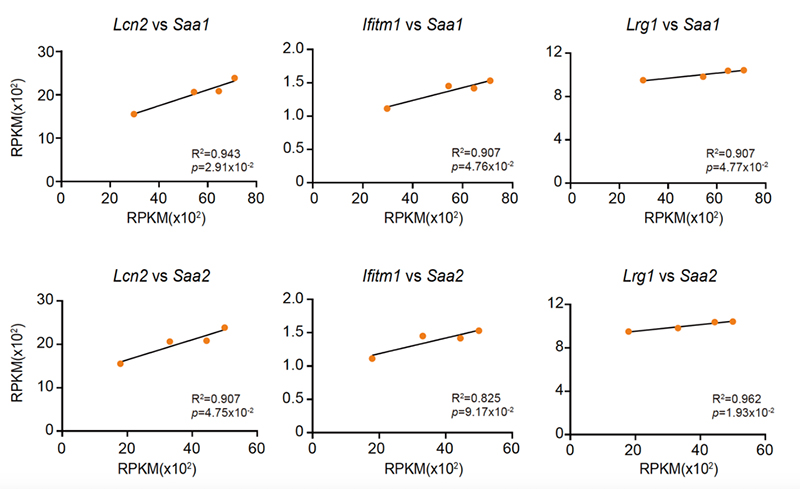EPFLの研究者は、ヒトの遺伝子発現リズムの複雑さを明らかにし、性別や年齢が体内時計に与える影響に新たな光を当てました。 EPFL researchers have uncovered the intricacies of gene expression rhythms in humans, shedding new light on how sex and age influence our body clocks.
2023-02-07 スイス連邦工科大学ローザンヌ校(EPFL)

◆このたび、ドイツ連邦工科大学のFelix Naef教授を中心とする研究チームは、ヒトの組織特異的な遺伝子発現リズムの構成を明らかにし、体内時計が性別や年齢によってどのように変化するのかを明らかにしました。
◆モデル生物では、分子リズムの解析は通常、タイムスタンプを用いた測定で行われるが、ヒトではそのようなデータは容易に入手できない。そこで研究チームは、大規模な死後献体から得られた既存の測定値を用いるとともに、約1,000人の献体に対して体内時計の時刻を割り当てるために設計された新しいコンピューターアルゴリズムを使用した。
◆その結果、中核となる時計機構の特性は体内で保存されており、性別や年齢によって大きな変化がないことがわかった。一方、解析の結果、代謝、ストレス応答経路、免疫機能などの主要なコンパートメントにわたって遺伝子発現リズムの広範なプログラムが存在し、これらのプログラムは1日に2回ピークを迎えることが明らかになった。
◆実際、概日リズムの全身的な構成が明らかになりつつあり、リズミカルな遺伝子発現は朝夕の波として起こり、副腎でのタイミングが先にピークを迎える一方、脳領域では代謝組織に比べてはるかに低いリズムを示した。
◆ドナーを性・年齢別に分けると、これまで知られていなかった性・年齢別の豊富な遺伝子発現リズムが生体機能全体に広がっていることが明らかになった。驚くべきことに、遺伝子発現リズムは性差があり(男性と女性で異なる)、女性ではより持続的である一方、リズムのプログラムは身体全体で加齢とともに概して減少していた。
◆特に、肝臓の「異種物質解毒」(肝臓が有害物質を分解する過程)で、性差のあるリズム(男性と女性の違いを指す)が顕著であった。さらに、高齢になると心臓の動脈で遺伝子発現のリズムが低下することがわかり、高齢者が心臓病にかかりやすくなる理由も解明されました。この情報は、人の体内時計が薬の効果や副作用にどのように影響するかを研究する「クロノファーマコロジー」の分野でも役立つ可能性があります。
◆この研究は、体内時計、性別、年齢の間の複雑な相互作用について新たな知見を提供するものです。これらのリズムを理解することで、睡眠障害や代謝性疾患などの病態を診断・治療する新たな方法が見つかるかもしれません。
<関連情報>
- https://actu.epfl.ch/news/how-age-and-sex-influence-our-body-clocks/
- https://www.science.org/doi/10.1126/science.add0846
ヒトにおける24時間遺伝子発現リズムの性差および年齢依存的な構成 Sex-dimorphic and age-dependent organization of 24-hour gene expression rhythms in humans
Lorenzo Talamanca,Cédric Gobet,Felix Naef
Science Published:2 Feb 2023
DOI:https://doi.org/10.1126/science.add0846
Tracking human circadian gene expression
Rhythmic circadian changes in gene expression have been well documented in model organisms, but data are limited from primates and particularly humans. Talamanca et al. developed an algorithm that allowed them to assign a circadian phase to each individual in a set of about 900 human donors. This approach allowed them to detect circadian changes in gene expression in samples from 46 tissues. Women showed higher rhythmicity of transcripts, especially in liver and the adrenal gland. The results also confirmed that rhythmicity was generally damped in older individuals. —LBR
Abstract
The circadian clock modulates human physiology. However, the organization of tissue-specific gene expression rhythms and how these depend on age and sex is not defined in humans. We combined data from the Genotype-Tissue Expression (GTEx) project with an algorithm that assigns circadian phases to 914 donors, by integrating temporal information from multiple tissues in each individual, to identify messenger RNA (mRNA) rhythms in 46 tissues. Clock transcripts showed conserved timing relationships and tight synchrony across the body. mRNA rhythms varied in breadth, covering global and tissue-specific functions, including metabolic pathways and systemic responses. The clock structure was conserved across sexes and age groups. However, overall gene expression rhythms were highly sex-dimorphic and more sustained in females. Rhythmic programs generally dampened with age across the body.


